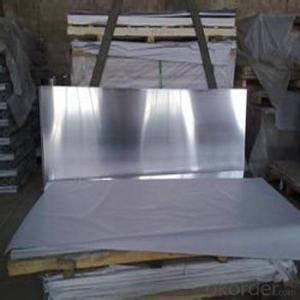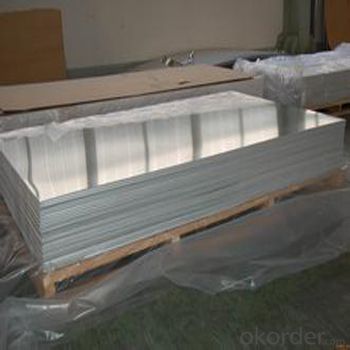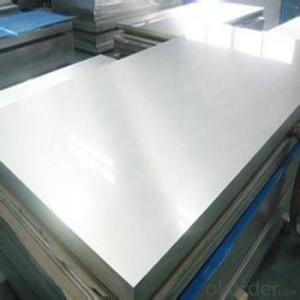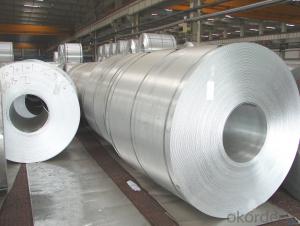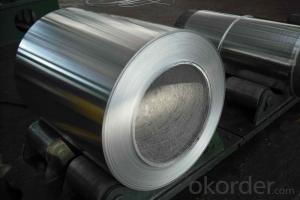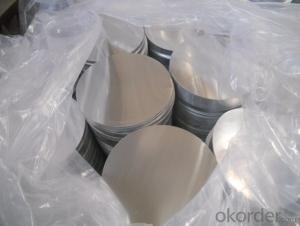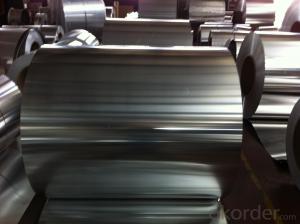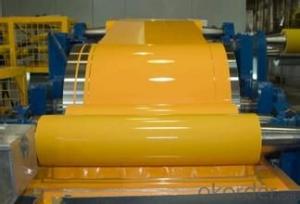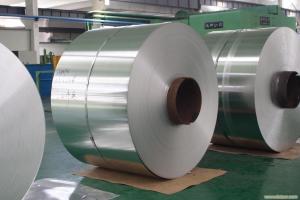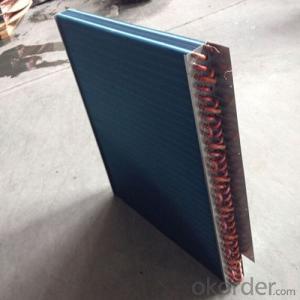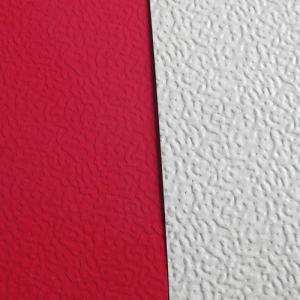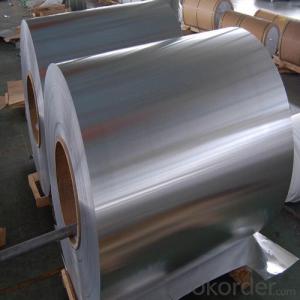Aluminum Coils Auburn Wa - AA5005 Aluminium Sheet Mill Finish CC and DC
- Loading Port:
- Shanghai
- Payment Terms:
- TT OR LC
- Min Order Qty:
- 5 m.t.
- Supply Capability:
- 1000 m.t./month
OKorder Service Pledge
OKorder Financial Service
You Might Also Like
Specification
Alunimiun Sheet
ALLOY:AA5*** (AA5052,AA5083,AA5754 etc)
TEMPER: H14,H16,H18,H22,H24,H26,H32,O/F
THICKNESS: 0.2mm-100mm
WIDTH: 30mm-1700mm
STANDARD: GB/T 3880-2006
Special specification is available on customer's requirement
2. Description
With excellent corrosion resistance and weldability, together with high strength, this alloy was designed for welded structures requiring maximum joint strength and efficiency. Can be anodized for increased corrosion resistance, but does not lend itself to decorative applications. Not meant to be a machining alloy, but can be machined fairly well with proper preparations. Because of its relatively high magnesium content, the workability rating would only be fair. Non-heat treatable. Typical applications include large marine craft, containers, railroad cars, structurals and elevator cars.
3. Advantage
Good quality!
4. Pictures
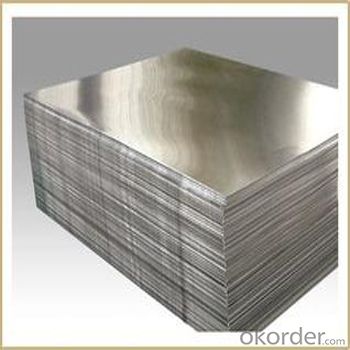
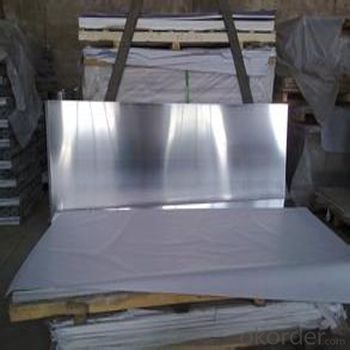
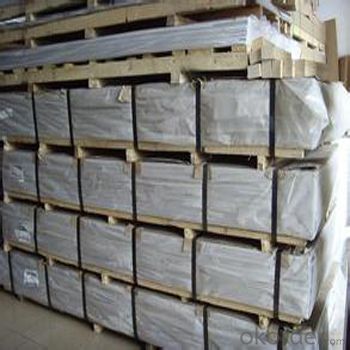
5.FAQ:
1)what is aluminum?
Aluminium (or aluminum; see spelling differences) is a chemical element in the boron group with symbol Al and atomic number 13. It is a silvery white, soft, nonmagnetic, ductile metal. Aluminium is the third most abundant element (after oxygen and silicon), and the most abundant metal in the Earth's crust. It makes up about 8% by weight of the Earth's solid surface.
Aluminium metal is so chemically reactive that native specimens are rare and limited to extreme reducing environments. Instead, it is found combined in over 270 different minerals.The chief ore of aluminium is bauxite.
2)What's kind of payment term we can supply?
CIF,CFR, FOB and other.
3)Can we supply samples?
Yes, we can!
- Q: What are environmentally friendly types of aluminum coil and do they exist?
- <p>Yes, there are environmentally friendly types of aluminum coil. These include recycled aluminum coils, which are made from aluminum that has been reprocessed and reused, reducing the need for new aluminum production and its associated environmental impact. Additionally, aluminum coils with a high recycled content are considered eco-friendly as they contribute to waste reduction and energy conservation. The production of recycled aluminum uses significantly less energy compared to virgin aluminum, making it a more sustainable choice.</p>
- Q: What is a better deal?Aluminum Cookware ( Paula Deen)orHard Anodized ( Rachael Ray )
- NEITHER ONE ---------THE BEST COOKWARE IS MADE WITH 14 / 10 STAINLESS STEEL AND WHATEVER BRAND YOU BUY ------MAKE SURE THEY HAVE A ALUMINUM SLUG IN THE BASE FOR EVEN HEATING . THE BRAND I BOUGHT WAS COMMAND PERFORMANCE SOLD ON H.S.N. -----THEY HAVE TEMPERED GLASS LIDS AND 24 KT GOLD PLATED HANDLES ----WORK GREAT AND LOOK GREAT ON DISPLAY .
- Q: Is it possible to recycle aluminum coils without any loss in their quality?
- <p>Yes, aluminum coils can be recycled without damaging their quality. Aluminum is one of the most recycled materials due to its ability to be recycled indefinitely without any loss in quality. The recycling process involves melting the aluminum, which can then be reshaped into new coils or other products. This process is energy-efficient and environmentally friendly, as it requires significantly less energy than producing aluminum from raw materials. Recycled aluminum maintains the same strength, durability, and appearance as new aluminum, making it a sustainable choice for various applications.</p>
- Q: What are the compositions of aluminum coil coating?
- The common compositions are crylic resin, solid inorganic filler, different pigments, flatting agent and so on.
- Q: What are the different coil slitting options available for aluminum coils?
- There are several different coil slitting options available for aluminum coils, depending on the specific requirements and desired outcomes. 1. Single-Loop Slitting: This is the most common method used for slitting aluminum coils. It involves feeding the coil through a set of rotating circular knives that make a single cut along the length of the coil. This produces multiple narrower coils of the desired width. 2. Double-Loop Slitting: Similar to single-loop slitting, double-loop slitting also involves making a single cut in the coil. However, in double-loop slitting, the coil is passed through the set of circular knives twice, resulting in two narrower coils. This method is often used when extremely accurate width tolerances are required. 3. Rotary Slitting: In rotary slitting, the coil is fed through a set of rotating knives that make multiple cuts simultaneously along the length of the coil. This allows for the production of numerous narrow strips in a single pass. Rotary slitting is commonly used when high-speed production is required. 4. Crush Cutting: Crush cutting involves using a set of opposing circular knives, where one knife is stationary and the other rotates against it. The knives crush and shear the aluminum coil, resulting in precise slitting. This method is well-suited for thin aluminum coils and is often used in applications where minimal burr is desired. 5. Shear Slitting: Shear slitting is a method that involves using a set of upper and lower straight knives to cut through the aluminum coil. The knives move past each other in opposite directions, creating a shearing action that produces clean and accurate slits. Shear slitting is commonly used for thicker aluminum coils. 6. Laser Slitting: Laser slitting is a modern and highly precise method that uses a laser beam to make the cuts in the aluminum coil. This method offers exceptional accuracy and clean edges, making it suitable for high-end applications that require tight tolerances. Each of these coil slitting options has its own advantages and is chosen based on factors such as required width tolerances, coil thickness, production speed, and desired edge quality. Manufacturers often select the most appropriate method based on their specific needs and the characteristics of the aluminum coils they are working with.
- Q: i have some questions about aluminum can recycling??:how much can you get from doing that??where can i take them in indianapolis, in???and what else could i recycle??its good for the earth and i need some money!! :) :D thanks!!! :)
- Aluminum is not biodegradable. Also making aluminum from ore requires a lot of energy. Recycling cans is easy and saves a whole lot of energy reducing green house gases. Recycling aluminum also reduces the mining required to dig up aluminum ore thereby saving the land and stopping pollution from mine run-off.
- Q: How do aluminum coils contribute to the corrosion resistance of marine applications?
- The corrosion resistance of marine applications is greatly improved by aluminum coils, thanks to the unique properties and characteristics of aluminum as a material. To begin with, aluminum naturally forms an oxide layer on its surface when it comes into contact with air. This oxide layer is highly resistant to corrosion and acts as a protective barrier to prevent further oxidation and corrosion of the metal. This inherent property of aluminum makes it an excellent choice for marine applications, where constant exposure to saltwater and moisture can be extremely corrosive. In addition, aluminum coils can be alloyed with elements like magnesium and manganese to further enhance their corrosion resistance. These alloying elements not only strengthen the aluminum but also improve its resistance to pitting and crevice corrosion. Pitting corrosion occurs when localized damage exposes the underlying metal, while crevice corrosion occurs in areas with restricted oxygen flow, such as gaps or joints. By alloying aluminum, the coils become more resistant to these types of corrosion, making them highly suitable for marine environments. Furthermore, aluminum coils can be coated with protective finishes such as anodizing or painting, which provide an extra layer of defense against corrosion. Anodizing involves creating a thicker and more durable oxide layer on the aluminum surface, thereby increasing its resistance to corrosion. On the other hand, painting acts as a physical barrier that shields the coils from direct contact with corrosive elements present in the marine environment. In conclusion, aluminum coils contribute to the corrosion resistance of marine applications through the presence of a natural oxide layer, alloying with other elements, and the option of protective finishes. These characteristics ensure that aluminum coils are highly durable and capable of withstanding the challenging conditions encountered in marine environments, guaranteeing their longevity and reliability.
- Q: What are the insulation options available for aluminum coils?
- There are various insulation options available for aluminum coils, including fiberglass insulation, foam insulation, and elastomeric insulation. These insulation materials help to improve the energy efficiency of the coils and prevent condensation or heat loss.
- Q: Are aluminum coils suitable for automotive applications?
- Automotive applications can benefit from the suitability of aluminum coils. This lightweight material offers numerous advantages for automotive use. It possesses excellent thermal conductivity, enabling effective heat transfer and cooling in vehicles. Additionally, aluminum is corrosion-resistant, making it an ideal choice for automotive applications exposed to moisture and diverse weather conditions. Furthermore, aluminum coils possess a high strength-to-weight ratio, ensuring durability while maintaining a low vehicle weight. This aspect is particularly advantageous in enhancing fuel efficiency and reducing emissions. Moreover, aluminum coils can be easily molded and shaped into various automotive components, including heat exchangers, radiators, condensers, and evaporators. Their versatility and adaptability make them well-suited for a wide range of automotive applications.
- Q: The user is asking if it's possible to recycle old aluminum coils to create new ones.
- <p>Yes, you can recycle old aluminum coils into new ones. Recycling aluminum is a highly efficient process, and it's very common in the industry. Aluminum has one of the highest recycling rates among metals due to its value and the energy savings associated with recycling compared to producing new aluminum from raw materials. When you recycle aluminum, it can be melted down and reformed into new coils or other products without losing its properties. This process helps conserve resources and reduces environmental impact.</p>
Send your message to us
Aluminum Coils Auburn Wa - AA5005 Aluminium Sheet Mill Finish CC and DC
- Loading Port:
- Shanghai
- Payment Terms:
- TT OR LC
- Min Order Qty:
- 5 m.t.
- Supply Capability:
- 1000 m.t./month
OKorder Service Pledge
OKorder Financial Service
Similar products
Hot products
Hot Searches
Related keywords
